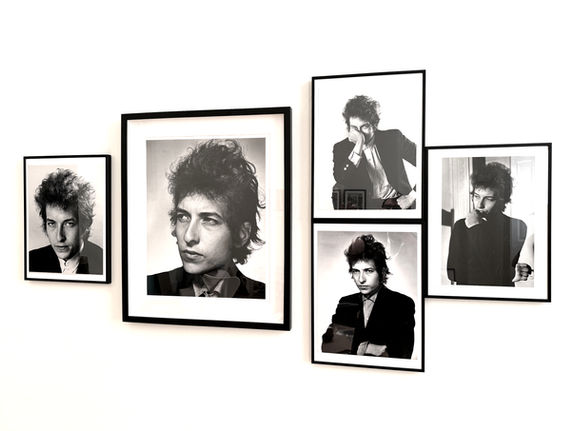
PHOTO LONDON 2025
FIRST FLOOR | BOOTH F-14
MAY 15-18 | Somerset House. London, UK
The Music Photo Gallery breaks the artificial glass ceiling of the photo art world with its presentation of the powerful photographs by Bob Gruen and Daniel Kramer of music legends. Photography, like much else, has its hierarchies and photographs of musicians have traditionally been left out of the history of photography books. But, a photograph of Tina Turner on stage by Bob Gruen is as monumental as a mountain by Ansel Adams and a picture of Bob Dylan embracing Joan Baez backstage by Daniel Kramer is as tender and as beautiful as a photograph by W. Eugene Smith, who, incidentally was Kramer’s mentor. Connection is at the heart of music – both the sound and the image. Mick Jagger noted that the goal of rock and roll is to keep it “real, sincere and heartfelt” and there cannot be a better description of the intimate, exhilarating and rare vintage photographs by Gruen and Kramer, many of which are on exhibition in Europe for the first time. Bob Gruen’s photographs are the result of, not just his all-access press pass, but of who he is: a master photographer with sensitivity, understanding and the ability to connect in an honest way with person in front of his camera. Bob Gruen’s “super power” is that he is truly liked by musicians. He understands them as performers and as individuals. Just look at his photographs of John and Yoko. Because John and Yoko let Bob into their lives, we can experience the joy of their love and creativity. Gruen’s photographs are exhilarating and it is a rare and beautiful privilege to see them at The Music Photo Gallery. The young Daniel Kramer and the young Bob Dylan shared a year of creativity and exploration. They connected in 1964-1965 as they were becoming masters of their crafts. Kramer described his work as documenting Dylan’s “state of creative evolution” as he went from being a folk-music hero to a rock and roller. Dylan did not like being photographed. It was, as he said, “a waste of his precious time.” Kramer, who apprenticed with Allan and Diane Arbus and Philippe Halsman, regularly showed his Dylan photographs to W. Eugene Smith, the most demanding of mentors. It hardly mattered to Smith the subject of the picture. It was the power of the photograph that was relevant – and the quality of the print. Smith went frame by frame through the Dylan contact sheets and was constantly tearing up Kramer’s prints and demanding he go back into the darkroom and do better. On exhibition in London this May are the results of Kramer’s hours in the darkroom. Music photographs have traditionally been known through reproduction: magazines, album covers, posters and newly made digital prints. The Music Photo Gallery has championed vintage gelatine-silver prints, made close to the time the negative was exposed. There is something magical knowing that the light that bounced off these musical “stars” has bounced back to us via the prints on view at The Music Photo Gallery at Photo London. -- Gail Buckland, former curator of the Royal Photographic Society of Great Britain, is an author, professor and curator. She is the author and curator of "Who Shot Rock & Roll: A Photographic History, 1955-Present" which opened at the Brooklyn Museum in 2009 and traveled to numerous art museums.









































